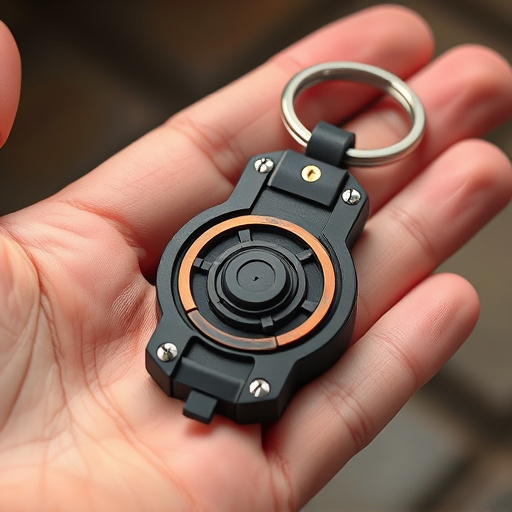Self-defense keychains are legal in some U.S. states but must adhere to strict regulations regarding force usage, including provocation rules and specific striking techniques. The Proper Keychain Striking Form Technique involves learning state laws, mastering safe distances, identifying vulnerable areas, and swift movements leveraging wrist strength for effective defense. Regular practice is crucial for muscle memory in stressful situations.
“Unsure about the legality of carrying a self-defense keychain? This comprehensive guide navigates the intricate state-by-state laws surrounding personal protection. ‘Understanding Self-Defense Laws: A State-by-State Analysis’ offers insights into the legal implications, ensuring you’re informed and equipped.
Learn how ‘Proper Use of a Keychain’ goes beyond functionality; it’s about mastering ‘Striking Form and Technique’ to enhance effectiveness and mitigate potential challenges. Arm yourself with knowledge and ensure your self-defense toolkit complies with local regulations.”
- Understanding Self-Defense Laws: A State-by-State Analysis
- The Legal Implications of Carrying a Keychain for Self-Defense
- Proper Use of a Keychain: Striking Form and Technique to Ensure Effectiveness and Legitimacy
Understanding Self-Defense Laws: A State-by-State Analysis
In the United States, self-defense laws vary significantly from state to state, and understanding these variations is crucial for anyone considering carrying a self-defense keychain. The legal requirements for using a keychain as a defensive tool involve assessing proper striking forms and techniques that are both effective and within legal boundaries. Each state has its own definition of reasonable force, which dictates what actions are permissible during a self-defense scenario.
A state-by-state analysis reveals a wide range of regulations. Some states allow the use of any force necessary to defend oneself, while others mandate specific rules for using a keychain. For instance, certain states require individuals to avoid provocations or retreat before employing any form of force, whereas some permit the use of deadly force only under extreme circumstances. The proper keychain striking form technique should be tailored to these legal requirements, ensuring that the user is acting within their rights while aiming to neutralize a threat as efficiently and safely as possible.
The Legal Implications of Carrying a Keychain for Self-Defense
Carrying a keychain for self-defense can have significant legal implications, varying widely across different states. While some jurisdictions permit the use of keychains as a means of personal protection, others have strict regulations that govern their carry and use. It’s crucial to understand these laws, especially regarding the proper keychain striking form technique. The legal requirements often dictate the type of keychain allowed, its size, and the circumstances under which it can be deployed.
For instance, many states require individuals to demonstrate they possess a reasonable level of skill in using their keychain for self-defense, akin to demonstrating proficiency with any other self-defense tool. This includes learning the proper striking form—a technique that involves precise angles, force application, and target areas—to ensure effectiveness while minimizing the risk of harm to others or yourself. Awareness of local statutes is vital; failure to comply can lead to charges, fines, or even arrest, undermining the intended purpose of carrying a keychain for self-defense.
Proper Use of a Keychain: Striking Form and Technique to Ensure Effectiveness and Legitimacy
The proper use of a keychain for self-defense goes beyond simply carrying it as a convenience; it requires understanding and practicing effective striking forms and techniques. To ensure its legitimacy and maximize its effectiveness during an emergency, users should familiarize themselves with basic self-defense principles tailored to keychain usage. This includes learning safe distances to maintain, identifying vulnerable areas on potential assailants, and employing swift and precise movements.
Focusing on the wrist’s natural flexibility and strength, users can master techniques that leverage the keychain as an extension of their arm, allowing for quick strikes aimed at sensitive points like the eyes, throat, or groin. Regular practice sessions are crucial to developing muscle memory and ensuring the technique becomes second nature in stressful situations. By combining the right form with a reliable keychain, individuals can defend themselves more confidently, knowing they are using a legal, personal defense tool effectively.
Understanding self-defense laws varies significantly from state to state, so it’s crucial to familiarize yourself with your region’s regulations. While a keychain designed for self-defense can be a handy tool, proper use involves mastering striking form and technique to ensure its effectiveness and legitimacy. By combining knowledge of local laws with skilled handling, you can make informed decisions to protect yourself legally and responsibly.
